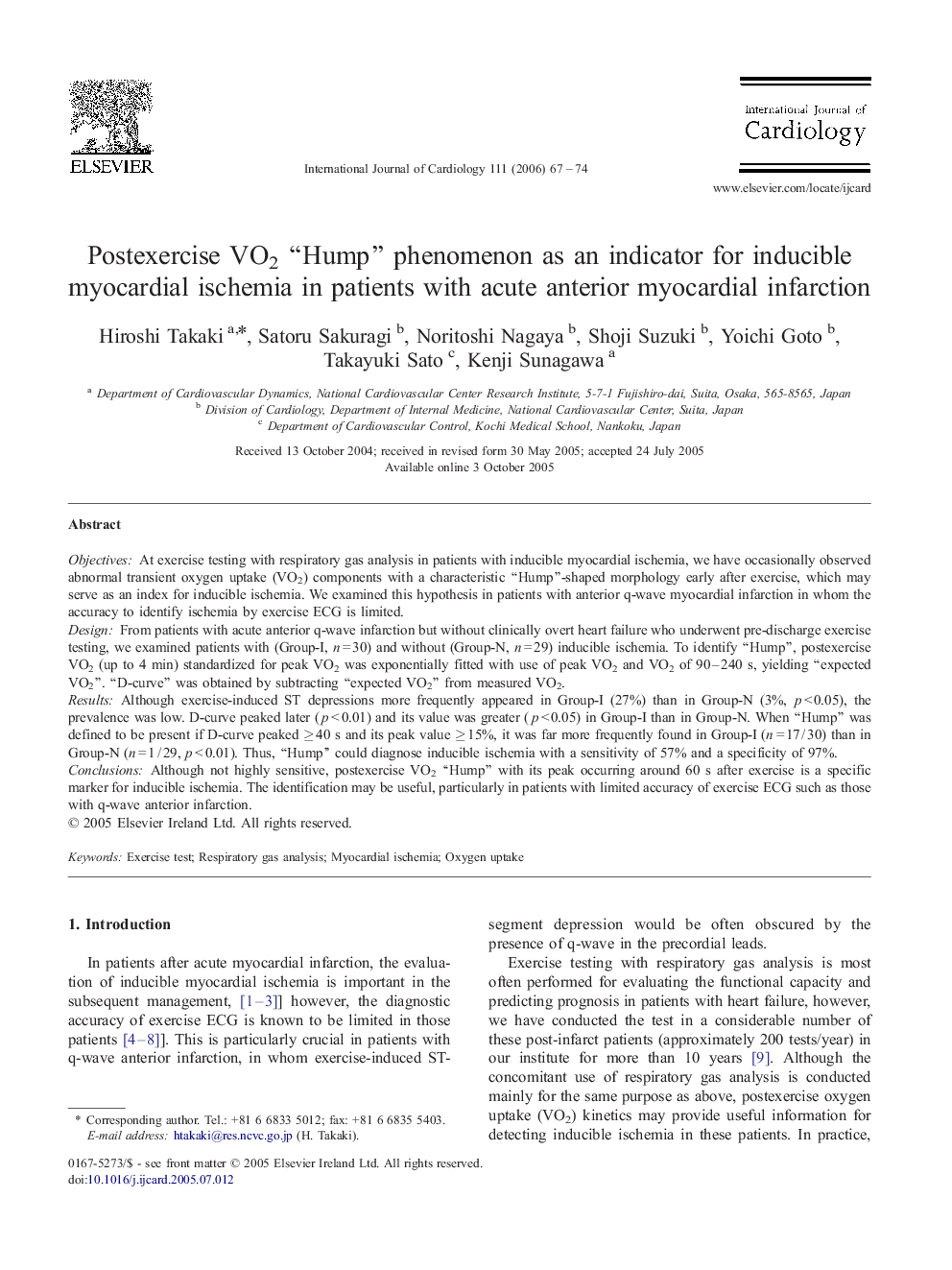| Article ID | Journal | Published Year | Pages | File Type |
|---|---|---|---|---|
| 2935737 | International Journal of Cardiology | 2006 | 8 Pages |
ObjectivesAt exercise testing with respiratory gas analysis in patients with inducible myocardial ischemia, we have occasionally observed abnormal transient oxygen uptake (VO2) components with a characteristic “Hump”-shaped morphology early after exercise, which may serve as an index for inducible ischemia. We examined this hypothesis in patients with anterior q-wave myocardial infarction in whom the accuracy to identify ischemia by exercise ECG is limited.DesignFrom patients with acute anterior q-wave infarction but without clinically overt heart failure who underwent pre-discharge exercise testing, we examined patients with (Group-I, n = 30) and without (Group-N, n = 29) inducible ischemia. To identify “Hump”, postexercise VO2 (up to 4 min) standardized for peak VO2 was exponentially fitted with use of peak VO2 and VO2 of 90–240 s, yielding “expected VO2”. “D-curve” was obtained by subtracting “expected VO2” from measured VO2.ResultsAlthough exercise-induced ST depressions more frequently appeared in Group-I (27%) than in Group-N (3%, p < 0.05), the prevalence was low. D-curve peaked later (p < 0.01) and its value was greater (p < 0.05) in Group-I than in Group-N. When “Hump” was defined to be present if D-curve peaked ≥ 40 s and its peak value ≥ 15%, it was far more frequently found in Group-I (n = 17 / 30) than in Group-N (n = 1 / 29, p < 0.01). Thus, “Hump” could diagnose inducible ischemia with a sensitivity of 57% and a specificity of 97%.ConclusionsAlthough not highly sensitive, postexercise VO2 “Hump” with its peak occurring around 60 s after exercise is a specific marker for inducible ischemia. The identification may be useful, particularly in patients with limited accuracy of exercise ECG such as those with q-wave anterior infarction.
